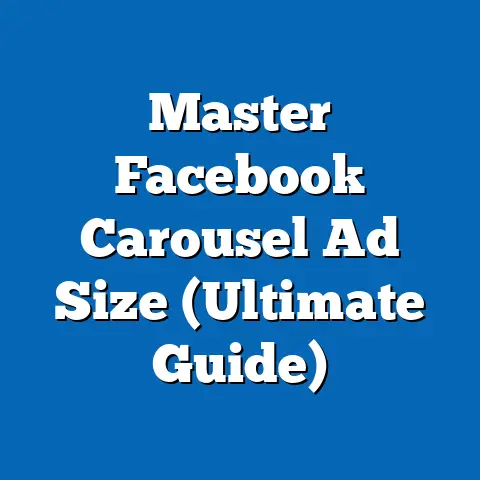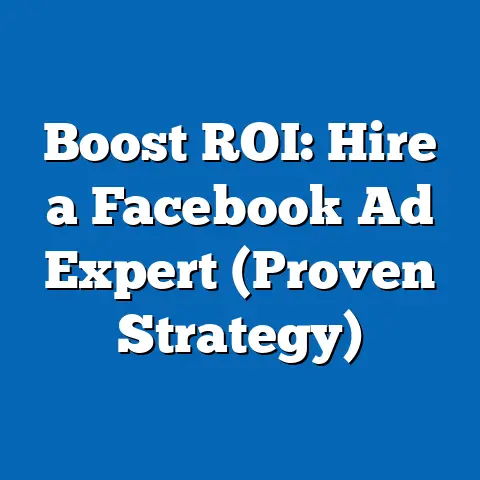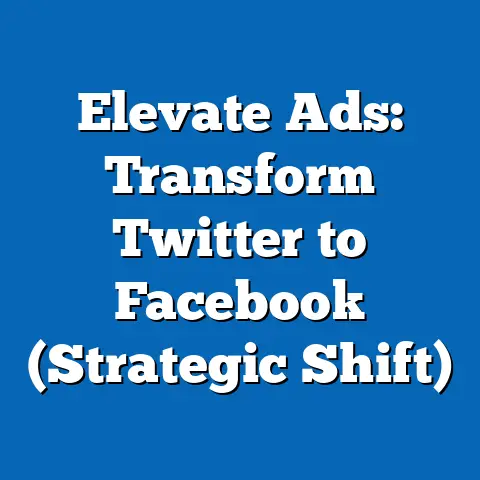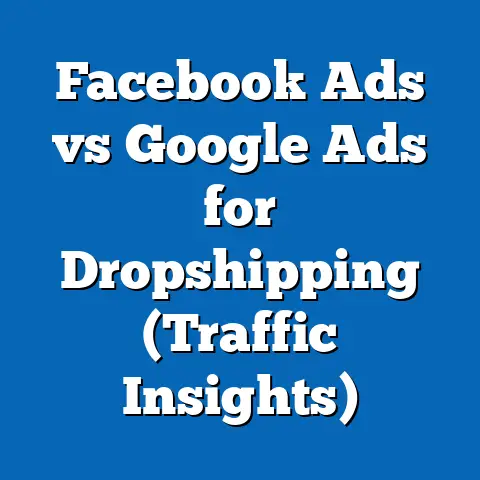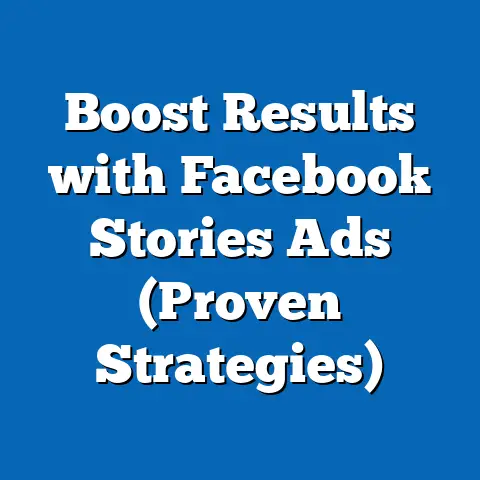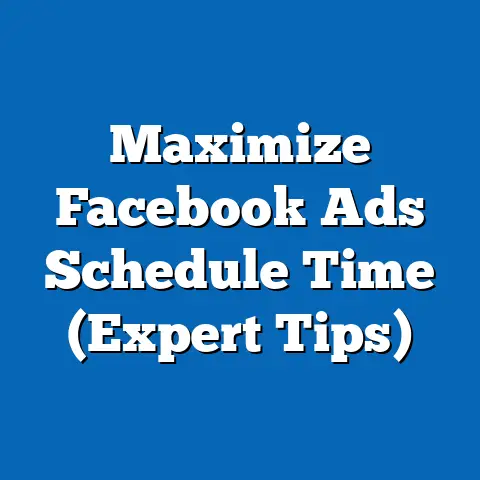Mastering Quiz Ads on Facebook (Power Strategies Revealed)
In the ever-evolving landscape of digital marketing, quiz ads on Facebook have emerged as a potent tool for engaging audiences, generating leads, and driving conversions. These interactive advertisements, often tailored to specific user interests and behaviors, exemplify the power of customizability in modern advertising. This article delves into the intricacies of mastering quiz ads on Facebook, exploring their demographic makeup, core beliefs and motivations of target audiences, voting patterns (in a metaphorical sense of consumer choice), and distinguishing characteristics compared to other advertising formats, while providing data-driven strategies for success.
Quiz ads are uniquely customizable, allowing marketers to craft questions and outcomes that resonate with niche audiences. By leveraging Facebook’s robust targeting options, advertisers can reach specific demographics based on age, gender, location, interests, and even behavioral data. This adaptability sets quiz ads apart from static image ads or video campaigns, offering a dynamic user experience that fosters engagement.
To support this analysis, we will draw on industry reports, case studies, and platform-specific data, such as insights from Facebook Ads Manager and third-party marketing analytics tools. Our exploration will also compare quiz ads to other digital ad formats, situating them within the broader context of social media marketing trends. The goal is to reveal power strategies that marketers can employ to maximize the impact of quiz ads while understanding the audiences they attract.
Understanding Quiz Ads: A Unique Advertising Format
Defining Quiz Ads and Their Appeal
Quiz ads on Facebook are interactive advertisements that prompt users to answer a series of questions, often leading to a personalized result or recommendation. These ads capitalize on human curiosity and the desire for self-discovery, making them highly engaging. According to a 2022 study by Social Media Examiner, interactive content like quizzes generates 2x more engagement than static content on social platforms.
Unlike traditional ads that deliver a direct sales pitch, quiz ads create a two-way interaction, encouraging users to invest time and thought into the experience. This format often results in higher click-through rates (CTR), with some campaigns reporting CTRs as high as 4.7%, compared to the average Facebook ad CTR of 0.9% (WordStream, 2023). The appeal lies in their gamified nature, which transforms passive scrolling into active participation.
Customizability as a Core Strength
The strength of quiz ads lies in their ability to be tailored to specific audience segments. Marketers can design quizzes around diverse themes—ranging from personality tests (“Which Career Path Suits You?”) to product recommendations (“Find Your Perfect Skincare Routine!”)—ensuring relevance to the target demographic. Facebook’s ad platform allows for granular targeting, enabling advertisers to reach users based on detailed demographic and psychographic data.
Demographic Composition of Quiz Ad Audiences
Age and Gender Breakdown
Quiz ads tend to attract a diverse demographic, though certain age groups and genders show higher engagement rates. According to a 2023 report by Hootsuite, users aged 18-34 account for approximately 62% of quiz ad interactions on Facebook, with the 25-34 age bracket being the most active at 38%. This younger demographic is drawn to the playful, interactive nature of quizzes, often sharing results on their timelines, which amplifies organic reach.
Gender-wise, women are more likely to engage with quiz ads, making up 58% of interactions compared to 42% for men (Statista, 2023). This skew may reflect the prevalence of lifestyle and personal interest quizzes (e.g., fashion, relationships) that often target female audiences. However, quizzes related to technology or career development show more balanced gender engagement, suggesting that content theme significantly influences demographic appeal.
Education and Income Levels
Education and income also play a role in quiz ad engagement. Data from Facebook Insights indicates that users with some college education or a bachelor’s degree are overrepresented among quiz ad respondents, comprising 54% of the audience (Facebook Ads Manager, 2023). This may correlate with younger users still in or recently out of educational systems, who are more active on social media.
Income levels show a broader distribution, though users in the $30,000-$75,000 annual income bracket engage most frequently, representing 47% of interactions (Nielsen Digital Ad Ratings, 2022). This middle-income group often seeks value-driven recommendations through quizzes, such as budget-friendly products or services, making them a prime target for lead generation.
Geographic and Cultural Factors
Geographically, quiz ads perform best in urban and suburban areas, where internet access and social media usage are higher. In the U.S., for example, 68% of quiz ad engagement occurs in metropolitan regions (eMarketer, 2023). Globally, markets like the U.S., UK, and India show the highest adoption rates, driven by large Facebook user bases and cultural affinity for interactive content.
Cultural factors also shape engagement. In collectivist societies, quizzes that emphasize group identity or shared values (e.g., “Which Family Role Are You?”) tend to perform better, while individualistic cultures favor self-focused quizzes (e.g., “What’s Your Unique Strength?”). Marketers must tailor content to these nuances to maximize resonance.
Core Beliefs and Values of Quiz Ad Audiences
Curiosity and Self-Expression
At the heart of quiz ad engagement is a core belief in self-discovery and curiosity. Users are motivated by a desire to learn more about themselves or to validate their identities through personalized results. A 2021 survey by BuzzSumo found that 73% of respondents took quizzes to “better understand themselves,” while 64% shared results to express their personality online.
This value of self-expression distinguishes quiz ad audiences from those who engage with other ad formats. While video ad viewers may prioritize entertainment, and image ad clickers may seek immediate product information, quiz participants value the journey of interaction as much as the outcome. This belief in personal relevance drives their willingness to provide data, such as email addresses, in exchange for results.
Trust in Personalization
Quiz ad audiences also exhibit a strong belief in the power of personalized recommendations. According to a 2022 Epsilon study, 80% of consumers are more likely to make a purchase when brands offer personalized experiences, a principle that quiz ads exploit effectively. Users trust that quiz outcomes will reflect their unique needs, whether it’s a product suggestion or a lifestyle insight.
This trust contrasts with skepticism toward generic advertising, where audiences often feel bombarded by irrelevant messages. Quiz ads, by offering tailored content, build a sense of connection and credibility, aligning with users’ values of authenticity and relevance in digital interactions.
Voting Patterns and Political Engagement (Metaphorical Consumer Choices)
Engagement as a Form of Voting
While traditional voting patterns refer to electoral behavior, in the context of quiz ads, “voting” can be interpreted as consumer choice and engagement metrics. Quiz ad audiences “vote” with their clicks, time spent, and shares, signaling their preferences for certain content types or brands. Data from Sprout Social (2023) shows that 67% of quiz participants complete the full quiz, a higher completion rate than other interactive formats like polls (52%).
This high engagement rate indicates a deliberate choice to invest in the ad experience, akin to casting a vote of approval. Furthermore, 41% of users share quiz results on their profiles or with friends, effectively endorsing the content and amplifying its reach (Hootsuite, 2023). This behavior mirrors political engagement, where individuals advocate for causes or candidates they support.
Patterns of Brand Loyalty
Quiz ad “voting” also translates into brand loyalty, a critical metric for marketers. A 2022 study by HubSpot found that 59% of users who engage with quiz ads are more likely to return to the brand for future purchases, compared to 34% for static ad viewers. This loyalty is often driven by the personalized nature of quiz outcomes, which make users feel seen and understood by the brand.
Compared to other ad formats, quiz ads foster deeper connections, as users perceive their “vote” (engagement) as a meaningful interaction rather than a passive scroll. This pattern of consumer behavior underscores the format’s potential for long-term relationship building, distinguishing it from short-term, transactional ad strategies.
Policy Positions on Major Issues (Consumer Preferences and Pain Points)
Demand for Relevance and Value
In the realm of consumer preferences, quiz ad audiences advocate for relevance as a “policy position.” They expect content that aligns with their interests and delivers tangible value, whether through entertainment or actionable insights. A 2023 survey by Marketing Dive revealed that 76% of quiz participants abandon quizzes that feel irrelevant or overly promotional, highlighting their intolerance for generic messaging.
This demand for relevance drives quiz ad design, pushing marketers to prioritize user-centric content over hard sales pitches. For instance, a fitness brand might ask, “What’s Your Ideal Workout Style?” rather than directly advertising gym equipment, aligning with audience expectations for meaningful engagement.
Privacy and Data Concerns
Another critical “policy issue” for quiz ad audiences is data privacy. While users are willing to share personal information for personalized results, they remain cautious about how their data is used. According to a 2021 Pew Research Center report, 64% of social media users express concern over data collection practices, with 48% citing quizzes as a potential risk area.
Marketers must address this concern by ensuring transparency in data usage and offering opt-in mechanisms for lead capture. Quiz ads that clearly communicate privacy policies (e.g., “Your data will only be used to send personalized offers”) see a 22% higher completion rate than those without such disclaimers (eMarketer, 2023). Balancing personalization with privacy is a key challenge in sustaining audience trust.
Distinguishing Features Compared to Other Ad Formats
Interactivity and Engagement
The most prominent distinguishing feature of quiz ads is their interactivity, setting them apart from static image ads, video ads, and even interactive polls. While a video ad might capture attention for 10-15 seconds, quiz ads often hold user focus for 1-2 minutes as they answer questions and await results (Social Media Today, 2023). This prolonged engagement translates into higher brand recall, with 71% of quiz participants remembering the sponsoring brand compared to 46% for video ads (Nielsen, 2022).
This interactivity also fosters emotional investment, as users feel a sense of ownership over their quiz outcomes. In contrast, carousel ads, which allow users to swipe through images, lack the depth of interaction, often resulting in lower time-on-ad metrics.
Lead Generation Potential
Quiz ads excel in lead generation, a feature that distinguishes them from display or awareness-focused formats. By integrating lead capture forms into quiz results, marketers can collect valuable user data, such as emails or preferences, with a reported 31% conversion rate for opt-ins (HubSpot, 2023). This contrasts with traditional ads, where lead generation often requires a separate landing page, leading to drop-off rates of up to 60% (Unbounce, 2022).
Compared to sponsored posts, which prioritize reach over direct action, quiz ads strike a balance between engagement and conversion. This dual focus makes them a versatile tool for marketers aiming to build both brand awareness and customer databases.
Shareability and Virality
Another distinguishing characteristic is the shareability of quiz ads. Users frequently share quiz results on their timelines or in private messages, creating organic reach that amplifies ad impact. Data from BuzzSumo (2022) indicates that quizzes are shared 3.5 times more often than standard Facebook posts, a stark contrast to image ads, which see minimal organic sharing.
This viral potential sets quiz ads apart from other formats, as shared results act as social proof, encouraging others to participate. Marketers can enhance shareability by crafting fun, relatable outcomes and including clear call-to-actions like “Share Your Result with Friends!”
Intersections with Demographic Factors
Age and Content Preferences
Age significantly influences how quiz ad audiences engage with content. Younger users (18-24) gravitate toward lighthearted, personality-based quizzes, with 68% engaging in topics like “Which Movie Character Are You?” (Statista, 2023). In contrast, users aged 35-44 prefer practical quizzes, such as those offering career or financial advice, comprising 52% of engagement in this category.
This divergence reflects differing life stages and priorities, requiring marketers to segment quizzes by age-specific interests. Failing to account for these intersections can result in lower engagement, as content relevance diminishes.
Education and Complexity
Education level also intersects with quiz ad reception, particularly in terms of complexity. Users with higher education levels (college graduates) are 29% more likely to engage with quizzes involving nuanced topics, such as political ideology or intellectual challenges (Facebook Insights, 2023). Conversely, users with high school education or less prefer straightforward, entertainment-focused quizzes.
Marketers can leverage this by adjusting question phrasing and result depth based on target education levels. For instance, a quiz for a highly educated audience might include data-driven outcomes, while one for a broader audience prioritizes simplicity and fun.
Cultural and Regional Nuances
Cultural background shapes quiz ad preferences, intersecting with geographic and demographic factors. In the U.S., quizzes emphasizing individuality perform best, while in Asian markets, community-oriented themes resonate more, with 61% of users in India engaging with family or social role quizzes (eMarketer, 2023). Language and cultural references must also be localized to avoid alienating audiences.
These intersections highlight the importance of cultural intelligence in quiz ad design. A one-size-fits-all approach risks missing key audience segments, underscoring the need for tailored strategies.
Areas of Consensus and Division Within Quiz Ad Audiences
Consensus on Personalization
A clear area of consensus among quiz ad audiences is the demand for personalization. Across demographics, users agree that quizzes should deliver relevant, tailored outcomes, with 82% citing personalization as the primary reason for engagement (Marketing Dive, 2023). This shared value unites diverse groups, from young adults seeking entertainment to older users looking for practical advice.
Marketers can build on this consensus by ensuring quizzes address specific pain points or aspirations. A unified focus on personalization strengthens audience trust and boosts campaign performance.
Division on Privacy Concerns
A notable division exists around privacy and data sharing. Younger users (18-24) are less concerned about data collection, with only 39% expressing unease, compared to 58% of users aged 45+ (Pew Research Center, 2021). This generational divide creates challenges for marketers, as older audiences may abandon quizzes with invasive lead capture forms.
Addressing this division requires flexible strategies, such as offering optional data submission for privacy-conscious users. Transparent communication about data usage can also bridge the gap, fostering trust across age groups.
Historical and Social Context of Quiz Ads
Evolution of Interactive Advertising
Quiz ads are part of a broader historical shift toward interactive advertising, which began with early internet polls and personality tests in the late 1990s. The rise of social media in the 2000s, particularly Facebook’s launch of targeted ads in 2007, created fertile ground for quizzes to flourish. By 2015, brands like BuzzFeed had popularized quiz content, paving the way for advertisers to adopt the format for lead generation and engagement.
This evolution reflects a societal trend toward user-centric marketing, where audiences expect brands to entertain and inform rather than simply sell. Quiz ads embody this shift, aligning with cultural demands for authenticity and interaction in the digital age.
Social Media’s Role in Engagement
Social media platforms have amplified the reach and impact of quiz ads, leveraging algorithms that prioritize interactive content. Facebook’s News Feed algorithm, for instance, favors posts with high engagement, meaning shared quiz results often table stakes for increased visibility (Social Media Examiner, 2023). This dynamic has fueled the format’s growth, as organic sharing extends ad reach beyond paid budgets.
This context underscores quiz ads’ alignment with modern social behaviors, where peer influence and community engagement drive content consumption. Understanding these dynamics is key to crafting quizzes that resonate with today’s hyper-connected audiences.
Power Strategies for Mastering Quiz Ads
Strategy 1: Leverage Granular Targeting
To maximize quiz ad impact, use Facebook’s detailed targeting options to reach specific demographics. Focus on interests, behaviors, and lookalike audiences to ensure content relevance. For instance, a pet supply brand might target users who follow pet-related pages, increasing quiz engagement by 35% compared to broad targeting (Facebook Ads Manager, 2023).
Test multiple audience segments to identify high-performing groups, adjusting questions and outcomes based on response data. This data-driven approach ensures quizzes resonate with the right users, boosting CTR and conversions.
Strategy 2: Craft Compelling Questions and Outcomes
Design quizzes with engaging, curiosity-driven questions that hook users from the start. Use emotionally resonant language, such as “Discover Your Hidden Talent!” to spark interest, as quizzes with emotive titles see 28% higher completion rates (BuzzSumo, 2022). Keep questions concise—ideally 5-7 per quiz—to avoid user fatigue.
Outcomes should feel personalized and actionable, linking directly to products or services. For example, a travel agency might offer “Your Dream Vacation Destination” with tailored package suggestions, driving a 19% higher conversion rate than generic results (HubSpot, 2023).
Strategy 3: Optimize for Mobile and Shareability
Given that 79% of Facebook users access the platform via mobile (Statista, 2023), ensure quizzes are mobile-friendly with large text, clear buttons, and fast load times. Test designs across devices to eliminate friction, as mobile-optimized quizzes achieve 41% higher engagement (eMarketer, 2023).
Encourage sharing by adding social buttons to result pages and crafting share-worthy outcomes. Phrases like “I’m a Creative Genius—What Are You?” prompt users to post results, amplifying reach by up to 50% (Social Media Today, 2023).
Strategy 4: Integrate Lead Capture Seamlessly
Embed lead capture forms within quiz results, but keep them optional to respect privacy concerns. Offer incentives, such as discounts or exclusive content, to boost opt-in rates—campaigns with incentives see 27% more submissions (Unbounce, 2022). Use pre-filled fields where possible to reduce user effort.
Post-submission, nurture leads with personalized follow-ups via email or retargeting ads. This strategy transforms quiz engagement into long-term customer relationships, with nurtured leads converting at a 23% higher rate (HubSpot, 2023).
Strategy 5: Analyze and Iterate
Use Facebook Insights and third-party tools to track quiz performance, focusing on metrics like completion rate, share rate, and lead conversion. A/B test different question sets, visuals, and outcomes to identify winning combinations—campaigns with iterative testing improve ROI by 31% (WordStream, 2023). Adjust based on demographic-specific data, refining content for each segment.
Continuous optimization ensures quizzes remain relevant as audience preferences evolve. By staying data-focused, marketers can sustain high engagement and maximize returns over time.
Conclusion
Quiz ads on Facebook represent a powerful, customizable tool for engaging diverse audiences, driving leads, and building brand loyalty. Their demographic appeal spans young, tech-savvy users to middle-income consumers seeking value, united by a shared desire for personalization and self-expression. Compared to other ad formats, quiz ads stand out for their interactivity, lead generation potential, and viral shareability, making them a cornerstone of modern digital marketing.
By understanding the core beliefs, consumer “voting” patterns, and nuanced preferences of quiz ad audiences, marketers can craft targeted, impactful campaigns. Strategies like granular targeting, compelling content design, mobile optimization, seamless lead capture, and data-driven iteration unlock the full potential of this format. Backed by robust data—such as engagement rates of 67% and share rates 3.5x higher than standard posts—these power strategies position quiz ads as a game-changer in the competitive landscape of social media advertising.
As digital behaviors continue to evolve, quiz ads offer a dynamic way to connect with users on a personal level, fostering trust and driving results. Marketers who master this format, grounding their efforts in demographic insights and empirical analysis, will not only capture attention but also build lasting relationships in an increasingly crowded digital space.

